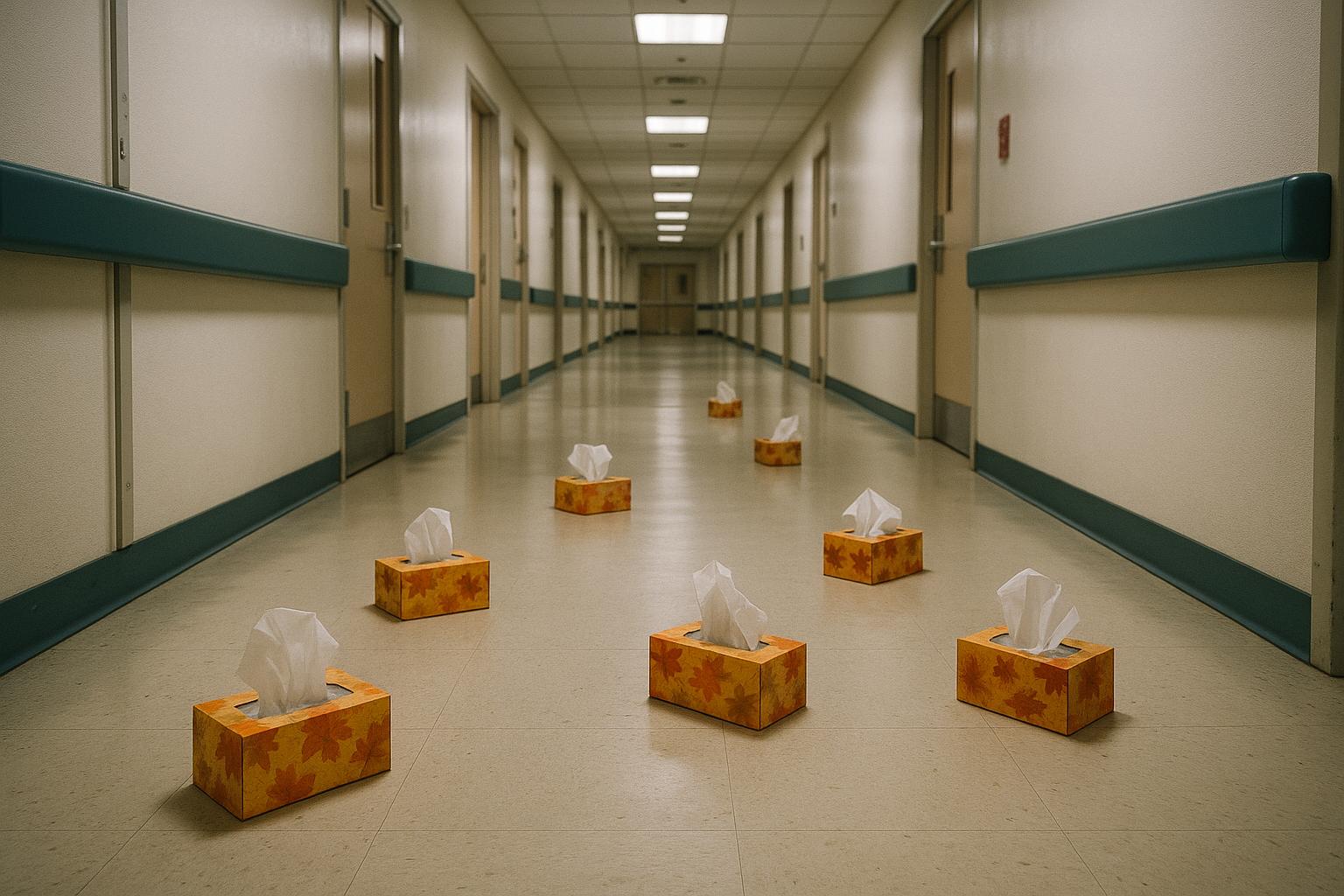As autumn settles in, there is a noticeable uptick in respiratory illnesses across the UK, with many people experiencing symptoms such as sniffles, coughs, and sneezes. Data from the UK Health Security Agency (UKHSA) confirms that cases of the common cold, flu, and Covid-19 are all on the rise simultaneously. This confluence of infections is driven by several well-understood seasonal and behavioural factors.
The common cold, caused predominantly by the rhinovirus, has seen a recent increase in cases, while Covid-19 infections are being fuelled by the emergence of two new variants. For most people, the severity of these Covid infections remains relatively mild, though the health system continues to monitor the situation vigilantly. Additionally, there has been a surge in flu cases, particularly among 15 to 25-year-olds in the past week, signalling a return of seasonal influenza after a quieter period during the height of the pandemic.
According to Professor Jonathan Ball of the Liverpool School of Tropical Medicine, several factors create a "perfect storm" for the spread of respiratory viruses at this time of year. The return of children to school after the summer break introduces them to new germs and facilitates their spread among peers and family members. Similarly, many adults have resumed work following holidays, increasing social interactions. The cooler weather also pushes more people indoors, where ventilation is often poorer, providing ideal conditions for viruses to thrive.
Professor Ball emphasised that this pattern is typical for autumn, describing the situation as a "big mixing pot of viruses" now circulating widely. He explained to the BBC that waning immunity in the population means more people are susceptible to infections, resulting in noticeable waves of illness. Respiratory infections can be caused by over 100 different viruses, alongside some bacterial causes, and people's susceptibility and response vary significantly based on factors such as age, physical fitness, genetic makeup, and recent exposure history. He noted, "sometimes it is just your individual genetics or how tired and rundown you may be," contributing to why some individuals are more affected than others.
Although it may feel as if everyone is unwell, Dr Jamie Lopez Bernal, a consultant epidemiologist at UKHSA, stated that the current levels of illness are not unusually high. Data shows that flu and Covid-19 infections are rising "slowly," consistent with what is expected for this season. Nevertheless, health officials continue to urge those eligible to receive their winter vaccines, which remain a crucial tool in mitigating the impact of these infections.
The UKHSA advises people who develop respiratory symptoms to take basic precautions to protect others: regular handwashing, staying home when possible, covering coughs and sneezes, and considering wearing masks in crowded or enclosed public spaces. Professor Ball also pointed out that encountering these infections can help build natural immunity, potentially reducing the severity of illness later in life. However, he stressed the importance of safeguarding vulnerable groups during this period when various viruses are circulating widely.
The UKHSA’s ongoing weekly reports provide detailed monitoring of the prevalence of influenza and Covid-19 across the country, tracking infection rates, hospitalisations, and other critical metrics. This data underpins public health responses and informs decisions on vaccination campaigns and other preventive measures, helping to manage the impact on the healthcare system and the population at large.
📌 Reference Map:
- Paragraph 1 – [1], [4]
- Paragraph 2 – [1], [2], [5]
- Paragraph 3 – [1], [3]
- Paragraph 4 – [1], [3]
- Paragraph 5 – [1]
- Paragraph 6 – [1], [2], [4]
Source: Noah Wire Services
